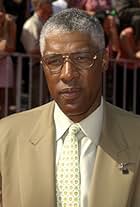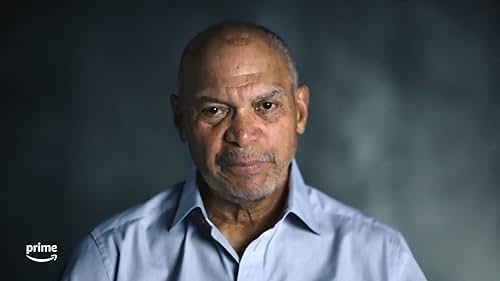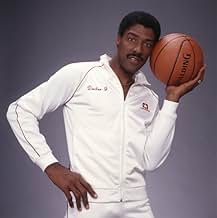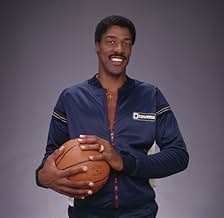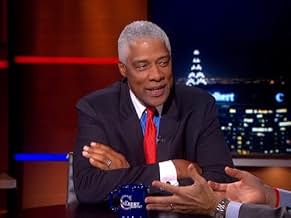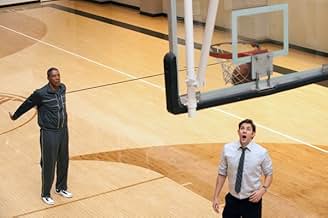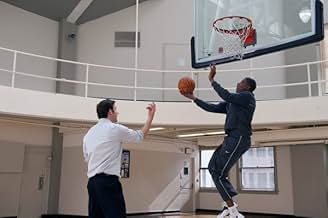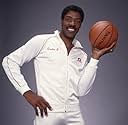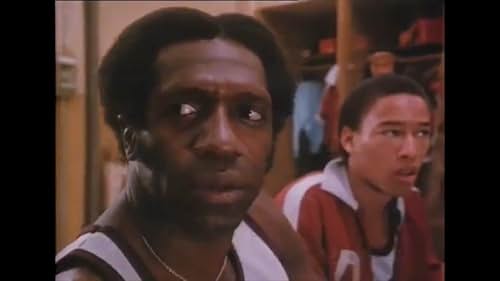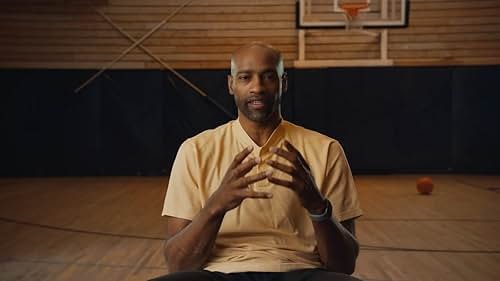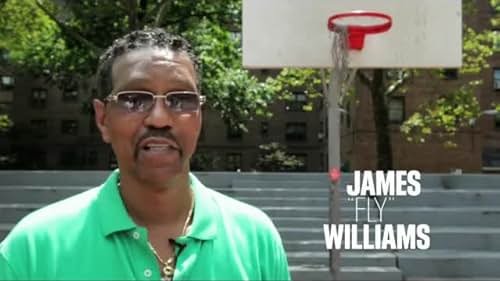Julius Erving
- Actor
- Director
- Additional Crew
One of the NBA's first superstars Julius Erving's high flying hard
powered style brought the NBA and basketball to levels previously
unheard of. Julius Erving was born in Hempstead New York in 1950. He
grew up in a housing project, the son of a single mother, with two
siblings. His father having left when he was three his mother
remarried, and they moved to nearby Roosevelt, New York. His mother
wanted his children to have a better life, and she realized that
basketball might be a way out for his young son. Before going to high
school Erving averaged 11 points a game with his Salvation Army team.
At Roosevelt High school he began to flourish, competing in statewide
tournaments, getting named on many occasions to various all Long Island
teams, and receiving other different awards. Erving averages 26 points
and 20 rebounds, one of the few players in NCAA History to average 20
of both statistics. In a time when few players left college early to
join the Pros Julius Erving did just that. He signed with the ABA's
Virginia Squires, a league which was not opposed to players entering
professional basketball early. He signed with the Atlanta Hawks in
1973, but legal entanglements prevented him from playing with the team,
as well as the Milwaukee Bucks, which also drafted him. By this time
the ABA was talking about a merger with the NBA, but Oscar Robertson's
player union was preventing this from taking place. The ABA was taking
a lot of top flight players from college who would have had excellent
careers in the NBA, as well as taking current NBA players and placing
them on ABA rosters. For a time it seemed as though the NBA would
submerge in favor of the ABA. However extremely lackluster ABA markets,
unstable ownership, too many team moves, and lackluster ABA markets
proved too much for the league. After starting with the Squires, Erving
was traded to the Nets. He became an incredible scorer, an incredible
talent, and considered to possibly be the most explosive basketball
players period, he won a few championships, scoring titles, and was one
of the all around best players in basketball. By 1976 the ABA was no
longer a significant force, teams collapsed, owners and players were
both disgruntled, and the ABA didn't have any significant talent to
market, except for Dr. J. What is not clear is how he got his nickname,
but it is thought that as a doctor he would cure anyone who thought
they could take him on. It was a nickname he had since college. In a
contractual dispute with his team he was bought by the Philadelphia,
for a then record then 3 million. Erving had been a basketball icon for
years, with his Afro, his intense style, and his in your face on the
court manor. It played very well with his fans, and would become a
staple in Philadelphia, joining a high flying spectacular team of
Darryl Dawkins, Lloyd B. Free, and others. The team went to a 50-32
record, the undoubted leader of his team. However the spectacular team
yet again fell to fundamentals. Erving advanced his team to the finals,
winning the first two. Erving and his teammates has said the series was
over before they started. However their opponents the Portland
Trailblazers, led by Bill Walton. Walton led his team to four straight
finals victories to win the teams first ever finals. For the next two
years the Sixers became a fun team to watch, and they would go deep
into the playoffs routinely, but they never could win. By 1979 the NBA
was in crisis, ratings, and attendance were down. The NBA was perceived
to be too black, too into drugs, and disco, and was viewed as too much
for one part of society, no doubt a result of bigotry, as a large
percentage of players in the NBA were black. But that year would be a
watershed year for the NBA. Larry Bird and Magic Johnson entered, and
Erving changed his image. He cut of his afro, made his image a little
more clean, took the in your face element out of his game, but remained
none-the-less spectacular. While he was a player with a lot of flair a
lot of observers said his game was not nearly as flaring as it was in
the ABA. But in 1980 Erving would rekindle an old rivalry, and start a
new one. The old one came against arch-rival Boston, led by Larry Bird.
That was a crucial match-up as both players were the undoubted leaders
of their teams, and both were small forwards. But the Sixers were
revamped as well, a little less spectacle, and a little more
fundamental. This was obvious in new point guard Maurice Cheeks and
defensive minded six man Bobby Jones. While the team beat Boston, they
were no match for the Mgic Johnson, Kareem Abdul-Jabbar, Jamaal Wilkes,
and the L.A. Lakers in the finals losing in six. Next year Philadelphia
had the best record in the NBA, split with Boston. L.A. suffered that
year and was eliminated in the first round, so everyone knew that
Philadelphia and Boston would meet in the Conference finals, and more
than likely would win the finals. The matchup was one of the classics.
Philadelphia was now a much more fundamental team, while the Celtics
were now revamped with new big men Kevin McHale and Robert Parish. In
the Boston Garden the series was split in the first two games. The next
two in Philadelphia's Spectrum Philly won. Boston won the next one in
the Garden, then the next one in the Spectrum, the margins in most of
these games were as low as 1 and as high as 3, Philadelphia in many of
the game blowing leads. In Game 7 in Boston Garden it happened again.
Philadelphia was up by as many as eleven, but in a very physical fourth
quarter a Larry Bird field goal, the only field goal in the last two
minutes stopped the Sixers yet again. The next year a hotly contested
series with Boston went the Sixers way in seven but yet again they lost
to the Lakers n the finals. In 1982 the Sixers realized they had a
minor problem: they had great offense, and fair defense, a defense that
really could not compete with the elite teams. The Sixers signed Moses
Malone, getting rid of power forward Caldwell Jones to Houston. This
team, led by Erving and Malone with a supporting cast of Andrew Toney,
Maurice Cheeks, Bobby Jones, Mark Iavaroni, and an excellent bench, the
team exploded and was considered one of the ten best ever. Moses Malone
was MVP, Erving All Star MVP, both All NBA First Team, Bobby Jones was
Sixth Man of the Year, leading the team to a 65-17 record. It was an
NBA crowning achievement, proving to be the pride of Philadelphia,
giving it's basketball team an elusive championship. But success proved
fleeting for the Sixers. Next year the injured and aging Sixers lost in
five in the first round to the upstart New Jersey Nets. While it was a
sad way to go out it was obvious the Sixers especially Erving was older
and not what he used to be. Despite that the team the next year would
play the now stellar Boston Celtics in the conference finals, and lose
in five. Afterward the Sixers never got to the conference finals again
with Erving, despite acquiring emerging superstar, and legend Charles
Barkley. He retired in 1987, a true legend in basketball, and in
Philadelphia. He was considered an unofficial ambassador to the game,
and also an avid philanthropist, helping the game reach heights of
popularity never before seen. Since then Erving is on the board of
directors of Coca Cola, a broadcaster for a short time, and always a
legend who advertises and promotes the game.
